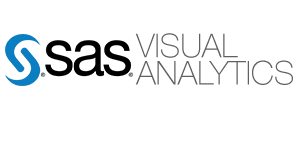Choosing the right analytics tool in today’s data-driven world can feel like searching for a needle in a digital haystack. With businesses generating more data than ever, the demand for powerful analytics solutions that can turn this data into actionable insights is at an all-time high. Enter MicroStrategy and SAS Visual Analytics, two giants in the analytics space, each offering unique strengths and capabilities. But which one is the right fit for your organization? Let’s dive into a detailed comparison to help you decide, starting with a critical aspect
| MicroStrategy | SAS Visual Analytics |
|---|---|
 |  |
| G2 Score – 4.2 out of 5 stars | G2 Score – 4.4 out of 5 stars |
| TrustRadius Score – 8.4/10 | TrustRadius Score – 8.4/10 |
Data Visualization and Discovery
In the realm of business intelligence, the power of data visualization cannot be overstated. It’s the bridge between complex datasets and actionable insights, transforming numbers into narratives that drive strategic decisions. Let’s compare how MicroStrategy and SAS Visual Analytics approach this pivotal area.
MicroStrategy
MicroStrategy’s approach to data visualization is both comprehensive and highly detailed, aiming to serve the complex needs of larger organizations. It provides a wide array of visualization options, from basic charts to more sophisticated, interactive data explorations tools. These visualization capabilities are designed to cater to the varied demands of users, allowing for the creation of highly customized reports and dashboards that can incorporate advanced analytical functions.
What sets MicroStrategy apart in this domain is its emphasis on creating a seamless analytics experience across all devices, ensuring that data visualizations are effective and engaging, regardless of how or where they are accessed. The platform also integrates AI and machine learning to enhance data discovery, offering users intelligent insights and suggestions to guide their exploration. This level of sophistication in visualization and discovery is geared towards organizations that require depth and precision in their analytics, providing users with the tools to uncover and communicate complex insights effectively.
SAS Visual Analytics
SAS Visual Analytics, on the other hand, focuses on making data visualization intuitive and accessible, enabling users to quickly derive insights from their data. The platform excels in offering an interactive experience, where users can easily create and customize visualizations without the need for extensive technical expertise. This user-friendly approach extends to SAS Visual Analytics’ discovery features, which leverage the platform’s powerful analytics engine to surface hidden patterns and insights through visual exploration.
A standout feature of SAS Visual Analytics is its ability to handle large datasets efficiently, allowing for real-time data exploration and visualization. This capability ensures that users can interact with their data dynamically, adjusting their analysis on the fly and receiving immediate feedback. Furthermore, SAS Visual Analytics supports storytelling with data, enabling users to create compelling narratives that weave together visualizations and insights, making complex information more digestible and actionable for decision-makers.
Integration and Connectivity
In today’s data-driven world, the ability of an analytics platform to integrate seamlessly with various data sources and systems is crucial. This capability determines how effectively an organization can harness its collective data for insightful analytics. Let’s compare how MicroStrategy and SAS Visual Analytics handle integration and connectivity.
Integration and Connectivity in MicroStrategy
MicroStrategy’s architecture is designed with a keen focus on providing expansive integration options, catering to the multifaceted data landscapes of large enterprises. It excels in connecting with a wide array of data sources, including traditional databases, cloud-based storage solutions, big data platforms, and real-time data streams. This extensive connectivity ensures that organizations can leverage a comprehensive view of their data, fostering a more informed decision-making process.
Beyond data source integration, MicroStrategy emphasizes its compatibility with various business applications and systems, enhancing its utility as a central piece of the broader IT infrastructure. It offers APIs and SDKs that enable custom integrations, allowing businesses to tailor the platform to their specific operational workflows. This level of customization and integration capacity underscores MicroStrategy’s commitment to fitting seamlessly into an organization’s existing data ecosystem, providing a unified analytics solution that enhances rather than disrupts.
Integration and Connectivity in SAS Visual Analytics
SAS Visual Analytics, on the other hand, approaches integration with a blend of robust data management capabilities and ease of connectivity. The platform is adept at ingesting data from diverse sources, facilitated by SAS’s powerful data management foundation. This allows for not just the integration but also the cleansing, transformation, and enrichment of data, preparing it for in-depth analysis.
SAS Visual Analytics also shines in its ability to integrate with the broader SAS ecosystem, offering users a holistic approach to analytics that encompasses everything from data preparation to advanced statistical analysis. Additionally, its support for cloud environments and third-party applications via APIs enables organizations to maintain agility in their analytics practices, ensuring that SAS Visual Analytics can adapt to evolving data needs and technological advancements.
Advanced Analytics and AI Capabilities
MicroStrategy
MicroStrategy integrates advanced analytics and AI capabilities into its comprehensive analytics suite, catering to the evolving needs of enterprises seeking to leverage predictive insights. The platform’s strength lies in its ability to incorporate a wide range of analytical functions, from predictive modeling and machine learning to statistical analysis, directly within the user interface. This integration facilitates a seamless workflow, where complex analyses become part of the standard reporting and dashboarding process.
A notable feature of MicroStrategy is its open architecture, which enables the platform to easily integrate with external AI and machine learning models. This flexibility allows organizations to leverage the latest innovations in AI technology, tailoring solutions to fit their unique business contexts. Additionally, MicroStrategy’s HyperIntelligence feature pushes the boundary of traditional analytics by embedding actionable insights directly into business applications and workflows, thereby accelerating the decision-making process.
SAS Visual Analytics
SAS Visual Analytics, built on the powerful SAS platform known for its statistical prowess, provides an extensive toolkit for advanced analytics and AI. The platform offers built-in support for sophisticated statistical analyses, predictive modeling, and machine learning algorithms, making it a formidable tool for organizations looking to delve deeper into their data. SAS Visual Analytics democratizes these capabilities, providing an intuitive interface that allows users of varying skill levels to execute complex analyses and derive predictive insights.
One of the platform’s core advantages is its seamless integration with the broader SAS ecosystem, which encompasses specialized analytics solutions and services. This integration enriches the analytical capabilities available to users, offering access to cutting-edge AI technologies and industry-specific models. Furthermore, SAS Visual Analytics emphasizes explainable AI, ensuring that insights generated through advanced analytics are interpretable and actionable, enhancing trust and understanding among users.

Related: Check out our free SEO suite

User Interface and User Experience
MicroStrategy: Precision-Crafted for Depth and Customization
MicroStrategy’s UI is engineered with an emphasis on delivering a sophisticated and comprehensive analytics experience. It is tailored to meet the needs of enterprises that demand a high degree of control and customization over their analytics environment. The platform’s interface is robust, offering a wide range of tools and features that allow for the creation of highly detailed reports and dashboards. This depth of functionality is a boon for users who seek to dive deep into data analytics, providing the granularity needed for thorough data exploration and insight generation.
However, the sophistication of MicroStrategy’s UI can also present a steeper learning curve for new users. Recognizing this, MicroStrategy has invested in making its interface more accessible and intuitive. Efforts include streamlining the dashboard creation process, enhancing visual analytics capabilities, and incorporating AI-driven recommendations to guide users in their data exploration journey. Despite these enhancements, the platform’s UI remains best suited for users who appreciate the ability to customize their analytics experience extensively and are willing to navigate the complexity that comes with such depth.
SAS Visual Analytics: Intuitive Design for Seamless Exploration
SAS Visual Analytics places a strong emphasis on creating an intuitive and engaging user experience. The platform is designed to be accessible to users of all skill levels, from data scientists to business analysts, enabling them to quickly generate insights without a steep learning curve. The interface is clean and user-friendly, with drag-and-drop functionalities and straightforward navigation that encourage exploration and discovery.
A key aspect of SAS Visual Analytics’ UI is its focus on interactive visualizations and easy-to-understand reports that can be created and shared across teams. This approach not only democratizes data analysis within organizations but also ensures that insights are communicated effectively, enhancing decision-making processes. The platform also leverages AI and machine learning to provide users with intelligent insights and suggestions, further simplifying the data exploration process.
Moreover, SAS Visual Analytics is designed with collaboration in mind, offering features that facilitate sharing and co-creation of reports and dashboards. This collaborative aspect of the UX ensures that teams can work together seamlessly, sharing insights and building upon each other’s analyses to drive collective decision-making.
Scalability and Performance
MicroStrategy: Engineered for Enterprise Scalability
MicroStrategy’s platform is built with an eye towards supporting the scalability demands of large enterprises. It is adept at managing vast amounts of data across a variety of sources, ensuring organizations can scale their analytics operations without compromising on performance. The architecture of MicroStrategy is designed to facilitate horizontal and vertical scaling, enabling businesses to expand their analytics capabilities as their data volume and user base grow. This scalability is crucial for organizations that foresee significant growth or fluctuations in their data analytics needs.
In terms of performance, MicroStrategy leverages a range of technologies and methodologies to ensure rapid data processing and query execution. This includes in-memory analytics, which accelerates data retrieval and analysis, and intelligent caching, to minimize redundant data processing. Such features are instrumental in delivering fast, responsive analytics experiences, even as datasets grow exponentially. The emphasis on performance optimization ensures that users can access insights in real-time, aiding swift decision-making processes.
SAS Visual Analytics: Agile Performance for Dynamic Environments
SAS Visual Analytics emphasizes agility and performance, tailored for organizations that prioritize quick, efficient data exploration and analysis. The platform is built on SAS’s powerful in-memory engine, which facilitates speedy data processing and enables real-time analytics. This core technology allows SAS Visual Analytics to handle large datasets with ease, providing users with immediate feedback as they explore and interact with their data.
Scalability in SAS Visual Analytics is approached with flexibility in mind, accommodating both growing data volumes and evolving analytical needs. The platform’s cloud-native design ensures that it can dynamically adjust resources to meet demand, allowing organizations to scale their analytics infrastructure up or down as required. This adaptability is key for businesses operating in rapidly changing markets or those with variable analytics workloads, as it ensures that analytics capabilities can be scaled efficiently and cost-effectively.
Pricing
MicroStrategy

SAS Visual Analytics

Conclusion
MicroStrategy emerges as a robust, enterprise-grade analytics solution renowned for its extensive customization capabilities, comprehensive integration options, and sophisticated advanced analytics and AI features. Its platform is designed with scalability at its core, aiming to support large organizations with complex, voluminous data needs. While it offers a detailed and customizable user interface, the depth and breadth of its capabilities mean it’s best suited for users who require precision in their analytics and are willing to navigate a steeper learning curve to unlock powerful insights.
SAS Visual Analytics, on the other hand, prioritizes intuitiveness and accessibility in its design, offering a user-friendly platform that simplifies data exploration and analysis. Its strength in advanced analytics is backed by SAS’s longstanding expertise in statistical analysis, providing users with powerful tools for uncovering deep insights. With its emphasis on interactive visualizations and a collaborative user experience, SAS Visual Analytics caters to organizations looking to democratize data analytics across teams, enabling users of varying skill levels to contribute to data-driven decision-making processes.
Read Next:
- International Backlink Strategies for Biotech Startups
- Navigating Regional SEO for Lifesciences: Our Take!
- Optimizing Multilingual Content for Biotech Firms: Fast and Easy
- Taking Your Biotech Company Global with SEO: (Our Process!)
- 31+ Top Social Media Management tools Compared! (2023)






















Comments are closed.